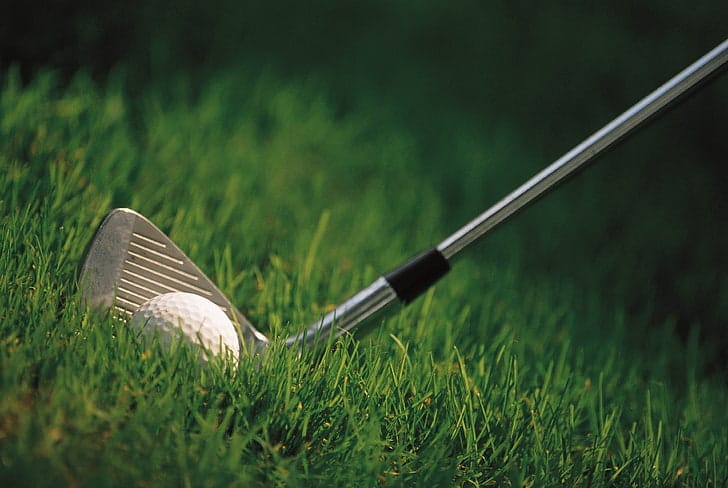Understanding Golf Club Degrees and Their Numbered System: A Brief History and Practical Guide

For any golfer—from beginner to scratch player—understanding the connection between a club’s loft (measured in degrees) and its number is crucial for mastering shot selection and distance control. Yet the relationship between loft and club number wasn’t always as standardized as it is today. The history of club lofts and numbering is a fascinating tale of evolving technology, shifting terminology, and marketing influence. Let’s unpack how these systems developed, why they matter, and how to pair clubs effectively for your game.
What Is Loft in a Golf Club?
The loft of a golf club refers to the angle of the clubface relative to a perfectly vertical plane. It directly influences the trajectory and distance of the ball. Higher-lofted clubs (with more degrees) launch the ball higher and generally travel shorter distances. Lower-lofted clubs hit the ball lower and farther.
Loft is measured in degrees—typically anywhere from around 7° (driver) to over 60° (lob wedge).
The Early Days: Named Clubs, Not Numbers
Before the 20th century, golfers didn’t use numbered clubs at all. Clubs were known by names such as:
- Brassie – roughly equivalent to a modern 2-wood
- Mashie – similar to a 5-iron
- Niblick – akin to a 9-iron or wedge
These clubs were handmade, and lofts could vary wildly between makers. A “mashie” from one craftsman might have a very different loft than one from another. Players learned their own set by feel and trial rather than strict specifications.
Standardization and the Rise of Numbers
As golf gained popularity in the 1900s and club manufacturing industrialized, there was a push for standardization. Manufacturers began assigning numbers to irons and woods, making it easier to market sets and for players to understand progression.
By the mid-20th century, the numbered system looked something like this:
| Club | Typical Loft (°) |
|---|---|
| 1-iron | 15–18° |
| 2-iron | 18–21° |
| 3-iron | 21–24° |
| 4-iron | 24–28° |
| 5-iron | 27–31° |
| 6-iron | 30–34° |
| 7-iron | 34–38° |
| 8-iron | 38–42° |
| 9-iron | 42–46° |
| PW (Pitching Wedge) | 45–48° |
| GW (Gap Wedge) | 50–52° |
| SW (Sand Wedge) | 54–58° |
| LW (Lob Wedge) | 58–64° |
Woods followed a similar trend:
- Driver (1-wood): 8–13°
- 3-wood: 13–15°
- 5-wood: 17–19°
Loft Creep: Why a Modern 7-Iron Isn’t What It Used to Be
In recent decades, club manufacturers began “de-lofting” irons—reducing their loft to claim longer distances for each numbered club. A modern 7-iron may now have the loft of a 6-iron from the 1980s. Why? Because golfers like to hit the ball farther, and lower lofts (combined with improved club design and weighting) deliver more yardage.
This has caused a ripple effect—creating the need for gap wedges to fill the distance between pitching and sand wedges, and pushing 3- and 4-irons out of many bags in favor of hybrids.
Modern Club Loft Ranges (2020s and On)
| Club | Modern Loft Range (°) |
|---|---|
| 3-iron | 18–21° |
| 4-iron | 20–24° |
| 5-iron | 23–27° |
| 6-iron | 26–30° |
| 7-iron | 29–33° |
| 8-iron | 33–37° |
| 9-iron | 37–41° |
| PW | 43–46° |
| GW | 48–52° |
| SW | 54–58° |
| LW | 58–64° |
The same club number may have different lofts depending on the brand and model. "Players' irons" (designed for better golfers) tend to have higher lofts than "game improvement" irons, which prioritize distance.
Why Degrees Still Matter
While numbers are convenient, degrees give you the real information. If you're gapping your clubs—ensuring each one hits a consistent distance interval—you need to know the lofts. For example, if your pitching wedge is 44°, you may want a gap wedge at 50° and a sand wedge at 56°, spacing lofts by about 6°.
Tour professionals and skilled amateurs often have their club lofts checked and bent to fine-tune gaps. With modern launch monitors, even recreational golfers can identify distance gaps caused by overlapping lofts or poorly matched clubs.
Pairing Clubs for a Complete Set
A standard modern golf set might include:
- Driver (10.5°)
- 3-wood (15°)
- Hybrid (19–22°)
- Irons (4–PW: 20°–44°)
- Wedges (GW, SW, LW: 48°, 54°, 60°)
You want 10–15 yards of carry distance between clubs. If two clubs are hitting within 5 yards of each other, consider tweaking lofts or removing one to make room for a more useful option (like a second hybrid or wedge).
Final Thoughts
Golfers often obsess over the number on the club, but it's the loft—measured in degrees—that tells the real story. As club technology has evolved, so has the relationship between club number and loft. Whether you’re buying a new set or simply trying to optimize your current one, understanding lofts and how they translate to distance and shot height will help you make better decisions on the course.
